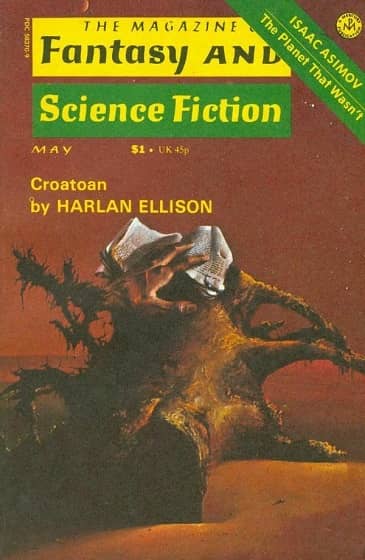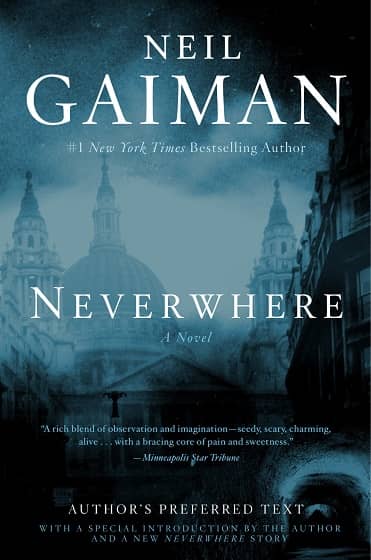Stories That Work: “The Valley of the Speaking Flames” by B. Pladek, and “Where a Good Town May Take Us” by Andi C. Buchanan, in Abyss & Apex
Eccentric stories stick with me better than classifiable ones. Robert Heinlein’s great time travel piece, “All You Zombies,” for example, was eccentric within the category of time travel stories, so much so that it felt like an outlier. It didn’t fit. Even now, where time travel as a premise is way more prevalent, “All You Zombies” startles.
I like teaching that story to high schoolers. It’s a great in-class science fiction IQ piece. I have them read it silently. The kids who can do the sideways thinking that the best science fiction asks of us all gasp at the same place in the story (really! They react physically). They want to turn around in their seats to talk to a neighbor. “Do you get it?” they ask. “What a mind trip!”
Here’s a one-question quiz to test whether a first time reader of “All You Zombies” understood the story: What do the bartender, the unwed mother, the city slicker and Jane have in common?
The eccentric stuff is better. Harlan Ellison’s “Croatoan,” Connie Willis’s Lincoln’s Dreams, Kelly Link’s “The Faery Handbag,” Neil Gaiman’s Neverwhere, and just about anything by Howard Waldrop are hard to lump in with their peers.
So, when I want a straight dose of the eccentric, the memorable, I often turn to a small-press magazine, the Hugo finalist Abyss & Apex, edited by Wendy S. Delmater.
 |
 |
 |
The Magazine of Fantasy & Science Fiction (May 1975, cover by Dario Campanile), Lincoln’s Dreams
(Bantam Spectra, 1992, cover by Jean-François Podevin), Neverwhere (HarperCollins, 2016)
Two stories from the first quarter of 2020 issue worked well for me, both, interestingly enough, about motherhood.
B. Pladek’s “The Valley of Speaking Flames” puts Rena, an exographer researching the “life” of an electric/flame phenomena on the surface of a planet. The “sparks” only last a couple years, but during that time they teach their stories to the newly formed sparks that float through the valley where they exist. The sparks tell the same stories over and over. The stories never change. The sparks don’t communicate in any other way. They don’t have names or individuality. Other researchers argue they aren’t alive at all, but Rena finds them fascinating.
At the same time Pladek tells of Rena’s investigations into the sparks, she also shares Rena’s challenges with raising a child on a generation ship where children are especially sensitive to disease and infection.
It’s the weaving together of these two stories that work so well in “The Valley of Speaking Flame.” The story reminded me of Ted Chiang’s “The Story of Your Life” in that it ties a mother’s experience into a science fictional conceit, illuminating both. The enigmatic ending deepens the thought-provoking aspects of this unique tale.
Andi C. Buchanan’s “Where a Good Town May Take Us” describes a town that regularly unassembles itself, then rebuilds exactly the same way but in a different place. Sometimes the move is only a few feet, but other times the town jumps miles.
There’s a great line in the movie The Truman Show, “We accept the reality of the world with which we are presented” that describes the characters’ reaction to the fantastic concept of a town spontaneously breaking down and then reassembling. The narrator, a mom in the town, describes her otherwise ordinary life as she feeds and dresses her kids, gets them ready for school, and worries about their well-being.
Her situation begins to feel increasingly metaphorical (without Buchanan pushing this point at all), until the town’s movement and the mother’s attempts to care for her children reach an unexpected breaking place. Her physical and emotional situation at the story’s end are uplifting and heartbreaking, which is an eccentric combination indeed.
I can’t leave these two stories without mentioning that they pay close attention to language. They are elegantly written, which is a consistent feature in Apex & Abyss, a magazine that doesn’t just like a good story; it likes a good story well told.
James Van Pelt lives in western Colorado. He has published five collections of short fiction — including Strangers and Beggars (2002), The Last of the O-Forms & Other Stories (2005), and The Experience Arcade and Other Stories (2017) — and two novels, Summer of the Apocalypse (2006) and Pandora’s Gun (2015), all with Fairwood Press. His last Stories That Work article for us looked at fiction from Kevin J. Anderson and David Farland.

“All You Zombies” is indeed a great story, and to me at least, it’s absolutely terrifying; it’s the purest distillation of the solipsism that runs through all of Heinlein’s work.
Hi, Thomas. I love reading and rereading that story. I love teaching it. But as a writer, the thing baffles me. How in the world did he do it? If you want a look at the plot, check out this chart:
[…] I also have been posting short fiction reviews at Black Gate. Those also appear every two or three weeks and are free to read. The column is called “Stories that Work.” My mission is to comment on stories that I think are successful and what recommends them. I’m not searching for a “best of” necessarily, nor am I reviewing the stories I don’t think work. Here’s my latest for Black Gate. […]